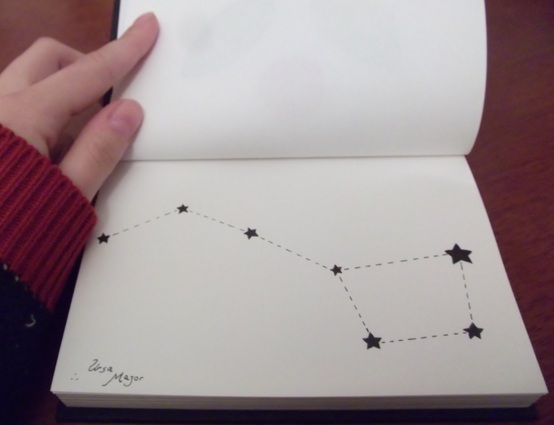I was never an amateur astronomer. Neither had a telescope whilst growing up. But, sometimes, I do like to gaze upon the night sky and try to figure out as many constellations as I can. Sadly, though, I only know two: Orion and Crux (which were I live is also called Southern Cross). So let us proceed to today's amusing knowledge!
Before anyone say anything about it, I do know that Ursa Major is a northern hemisphere constellation. Nevertheless, I find it very interesting and decided to get to know it a little bit better. It is formed by seven shiny stars, which draw a square and a tail (I've never seen bears with long tails, but wha-te-ver). This figure, however, is called an asterism, meaning a characteristic group that doesn't constitute a constellation, since the real one is much bigger, including about 200 more stars. The Ursa Major is visible in the nights of almost all northern hemisphere, also being called the Circumpolar Constellation, but it's easier to be seen from January to October, when it is not so close to the horizon.
This constellation is so famous that many ancient civilizations gave it meaning: for the Cherokee Indians, the stars represented seven hunters chasing a bear since the beginning of Spring until the Fall; the Brittish considered it King Arthur's chariot, moved by two horses; the Chinese said it was a shell that offered food in times of hunger; for the Egiptians those stars represented imortality, since they're visible all year; the Hebrews also saw a shell that measured cereal amounts; and I believe everyone knows the legend of Zeus and the nymph Calisto (who became the Ursa Major herself) from the Greeks.
Before anyone say anything about it, I do know that Ursa Major is a northern hemisphere constellation. Nevertheless, I find it very interesting and decided to get to know it a little bit better. It is formed by seven shiny stars, which draw a square and a tail (I've never seen bears with long tails, but wha-te-ver). This figure, however, is called an asterism, meaning a characteristic group that doesn't constitute a constellation, since the real one is much bigger, including about 200 more stars. The Ursa Major is visible in the nights of almost all northern hemisphere, also being called the Circumpolar Constellation, but it's easier to be seen from January to October, when it is not so close to the horizon.
This constellation is so famous that many ancient civilizations gave it meaning: for the Cherokee Indians, the stars represented seven hunters chasing a bear since the beginning of Spring until the Fall; the Brittish considered it King Arthur's chariot, moved by two horses; the Chinese said it was a shell that offered food in times of hunger; for the Egiptians those stars represented imortality, since they're visible all year; the Hebrews also saw a shell that measured cereal amounts; and I believe everyone knows the legend of Zeus and the nymph Calisto (who became the Ursa Major herself) from the Greeks.
~Ally

 RSS Feed
RSS Feed